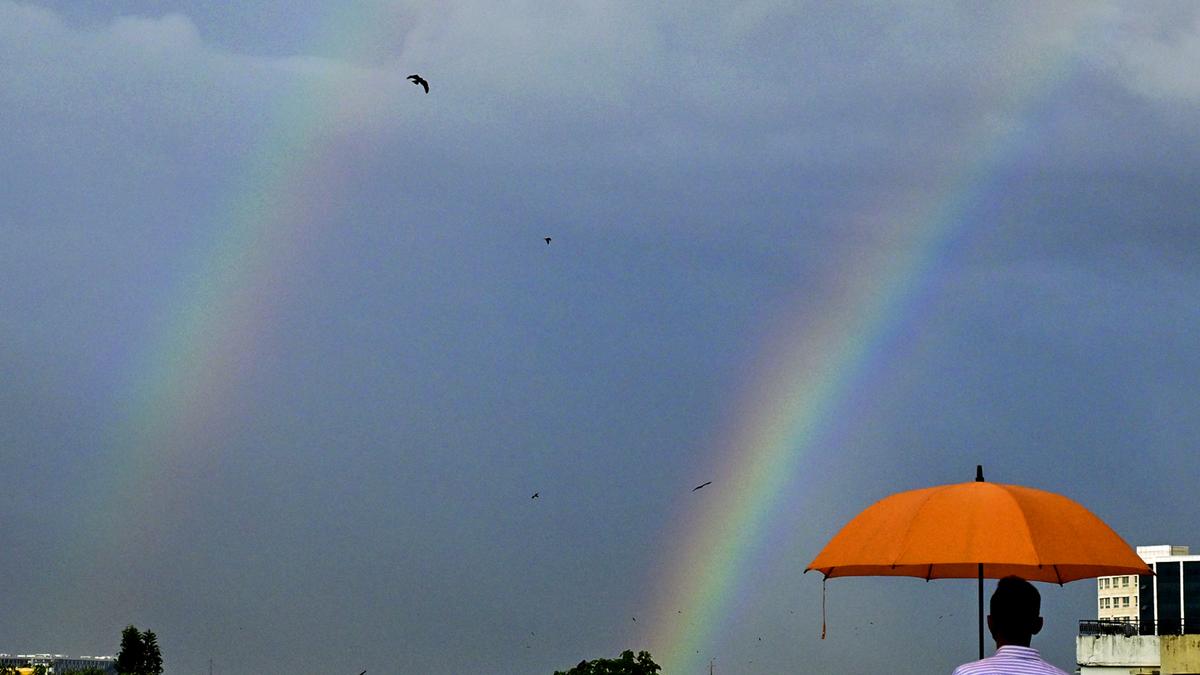
South West Monsoon progression on course, covers the entire Karnataka
The Hindu
The South West Monsoon which made a timely entry to Karnataka this year, has furthered progressed so as to cover entire Karnataka in a major reprieve to the farmers
The South West Monsoon which made a timely entry to Karnataka this year, has furthered progressed so as to cover entire Karnataka in a major reprieve to the farmers.
Ravaged by unprecedented drought and intense heat wave during summer, the farmers were on the brink, with crop loss and future looking grim. However, the weather conditions turned out to be favourable for the advent of the monsoon and has covered the entire State as on June 6, according to Karnataka State Natural Disaster Monitoring Centre.
The rainfall distribution has been described as ‘’fairly widespread’’ as more than 72% of the rain gauge stations at gram panchayats have recorded rainfall in excess of 2.5 mm during the 24 hour period ending 8.30 a.m. on Friday.
As per KSNDMC records, the cumulative rainfall across the State from June 1 till June 7 was 45 mm as against the normal rainfall of 35 mm for the assessed period. The rainfall has been widespread, and south interior Karnataka received 62 mm against a normal of 23 mm while north interior Karnataka has received 60 mm of rainfall against the normal of 24 mm for the same period.
It is only the coastal and malnad belt where the rainfall is below average but these are early days of monsoon. While the coastal belt has received 45 mm of rains against a normal of 105 mm during the first week of June, the Malnad region have receive 32 mm of rainfall against a normal of 48 mm, according to KSNDMC.
However, rains during the pre-monsoon — which is from March 1st to May 31st — in all the regions of the State have been above normal. Thus the deficiency in the Coastal and Malnad region incurred during the first week of June will not be significant.
The cumulative rainfall from June 1 to 7 is under the large excess category in 23 of the 31 districts; excess in one district, normal in 1 district, deficit in 5 districts and large deficit in 1 district.

“Writing, in general, is a very solitary process,” says Yauvanika Chopra, Associate Director at The New India Foundation (NIF), which, earlier this year, announced the 12th edition of its NIF Book Fellowships for research and scholarship about Indian history after Independence. While authors, in general, are built for it, it can still get very lonely, says Chopra, pointing out that the fellowship’s community support is as valuable as the monetary benefits it offers. “There is a solid community of NIF fellows, trustees, language experts, jury members, all of whom are incredibly competent,” she says. “They really help make authors feel supported from manuscript to publication, so you never feel like you’re struggling through isolation.”

Several principals of government and private schools in Delhi on Tuesday said the Directorate of Education (DoE) circular from a day earlier, directing schools to conduct classes in ‘hybrid’ mode, had caused confusion regarding day-to-day operations as they did not know how many students would return to school from Wednesday and how would teachers instruct in two modes — online and in person — at once. The DoE circular on Monday had also stated that the option to “exercise online mode of education, wherever available, shall vest with the students and their guardians”. Several schoolteachers also expressed confusion regarding the DoE order. A government schoolteacher said he was unsure of how to cope with the resumption of physical classes, given that the order directing government offices to ensure that 50% of the employees work from home is still in place. On Monday, the Commission for Air Quality Management in the National Capital Region and Adjoining Areas (CAQM) had, on the orders of the Supreme Court, directed schools in Delhi-NCR to shift classes to the hybrid mode, following which the DoE had issued the circular. The court had urged the Centre’s pollution watchdog to consider restarting physical classes due to many students missing out on the mid-day meals and lacking the necessary means to attend classes online. The CAQM had, on November 20, asked schools in Delhi-NCR to shift to the online mode of teaching.









